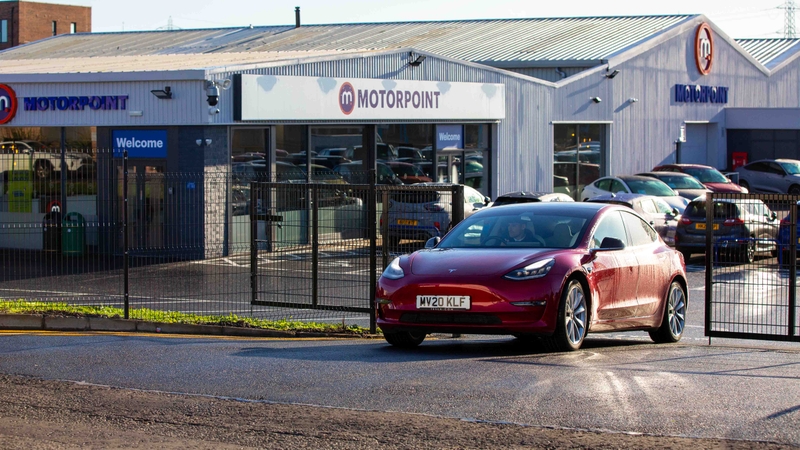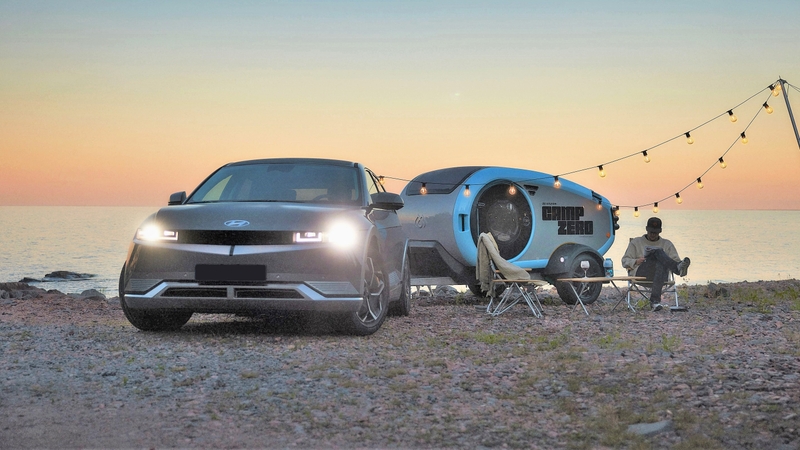













Lotus Eletre Review

Lotus can’t survive simply by punting out a handful of sports cars a year. Now it’s owned by Geely – the company that also owns Volvo – it has the money to develop a new range of cars.
And, in this new lineup, the Eletre is the cat among the pigeons. A 2.6-tonne electric SUV is hardly what you’d expect. But it certainly has supercar performance.
- Addictive performance
- Tactile and eye-catching interior
- Very practical
- Huge mass affects handling and efficiency
- Too long to fit in a parking space
- Firm and jiggly ride
Should I buy a Lotus Eletre?
This isn’t the first time Lotus has had a radical reinvention, although it may be the most successful attempt. Some readers might remember a bold plan from then-CEO Dany Bahar in 2010 that included everything from supercars to city cars, with varying degrees of hybridisation. And no production models.
With support from parent brand Geely – the Chinese conglomerate that also oversees Volvo, Polestar, Smart and taxi maker LEVC, among others – Lotus’ range has blossomed. There’s the Emeya saloon and the Evija hypercar – both electric – plus the Emira sports car that’s purely petrol-powered. And the Eletre SUV.
This is the one that Lotus enthusiasts may struggle with the most, because it’s a 5.1-metre, 2.6-tonne EV. Everything that Lotus’ old motto – simplify and add lightness – isn’t. The Eletre is intended to bring a whole host of new customers on board from far-flung countries, most of whom haven’t heard of Colin Chapman or the Lotus Elan or any of the carmaker’s history.

But they’ll have heard of the Porsche Cayenne, Aston Martin DBX, Lamborghini Urus and BMW iX. Only the latter is electric so it’s the closest rival to the Eletre – otherwise, there’s the opulent Mercedes EQS SUV, but that’s so unsporty it might as well be wearing boat shoes.
The Lotus is unapologetically sporty. There’s a racetrack mode on the range-topping Eletre R, carbon fibre wherever you care to look, and even the base model gets 605hp and a 0-62mph time of under five seconds. Hold on to your hat.
Interior and technology

With chunky pricing and well-established luxury SUV rivals, the Eletre can’t have a ‘typically Lotus’ interior with little more than a steering wheel and a slight whiff of glue. The Eletre’s interior is as good as any of its rivals’, with excellent build quality and a wonderful choice of textures and materials. Some of it is a bit much, a bit chintzy perhaps, but it’s more welcoming than simply covering every surface with leather.
All the switchgear feels very solid and tactile, with a special mention to the paddles behind the steering wheel. They’re used for changing the driving modes rather than flicking through the gears, but they’re so nice that you might find yourself swapping between the modes just to interact with the paddle.
The suede steering wheel they’re attached to feels lovely as well, although we worry how it’ll look after a couple of years of use. And one of the fancy cupholders got stuck in our test car, too.

It’s clear that the Lotus’ infotainment system has been inspired by smartphone interfaces and a Tesla screen. It uses a Qualcomm Snapdragon chip and Unreal Engine processing power, both of which come from the biggest videogame titles, for near-instant responses. The menus are neatly arranged, the graphics are great and the animations are swish, but some of the icons and submenus are just too small to easily use when you’ve got 600 or 900hp at your disposal.
There’s a slim screen for the passenger – matching the slim driver’s display – but the passenger side doesn’t offer the breadth of functionality that the optional third screen in the Porsche Cayenne offers. Talking of extra screens… don’t option the wing mirror cameras. They’re not as adjustable as proper mirrors and the display screens are too low down. The few miles extra range you get aren’t worth the cost, complexity and awkward usability of the cameras.
We’d be here all day if we listed the standard equipment you get, but the highlights are a KEF Premium audio stack with Dolby Atmos surround sound, wheels spanning 20-23 inches in diameter, and a full suite of driver assistance systems. When the legislation allows, the Eletre will be able to drive itself, thanks to its network of LiDAR, radar and sensors.
Practicality

The Lotus Eletre is a behemoth. At 5.1 metres nose-to-tail, it’s too long for a standard parking space. That’ll cause regular frustration for you or your chauffeur.
The flipside is that the Eletre has a vast boot and fantastic rear-seat space. Produced in China at least partly for the Chinese market, the Eletre delivers on the legroom that buyers over there demand. Headroom is also decent, despite the car’s sloping shape and panoramic sunroof.

As standard, the Eletre is a five-seater with a normal three-seat rear bench. But you can pay to have them replaced with two sports seats, so the rear-seat passengers are supported through fast corners just as well as those in the front. Whichever configuration you go for, the rear-seat passengers get their own touchscreen to fiddle with their climate controls, seat heating and massaging functions.
The boot stands at 611 litres with the four-seat layout, or 688 litres with the standard five-seat configuration. Either way, you’ve got a huge amount of space to fill – there’s no doubt the Eletre will work as a plush family car. In a five-seat Eletre, the rear seats can be folded down to increase space by almost 1,000 litres. There’s barely any load lip, and the air suspension can be lowered to make it easier to load bulky things.
The Eletre’s really practical up front, too. Beneath the centre console is a huge open space that can fit a rucksack, plus there’s a deep storage bin in the centre armrest and large door bins.
Engines and performance

The Eletre’s powertrains are a far cry from the 120hp 1.8-litre engine fitted in the original Lotus Elise. Standard and S models get 603hp, over 700Nm of torque and a 0-62mph time of 4.5 seconds.
Raging-hot R versions kick out 905hp, nearly 1,000Nm and a three-second 0-62mph sprint. That’s quick enough to give your face a quick readjustment. No need for Botox – you’ll feel the G forces pulling on your skin, and you’ll become one with the seat. Every Eletre is absolutely, insanely quick, but the way the R gathers speed is breathtaking and addictive.
And, with so much power, it keeps pulling far above motorway speeds. The numbers seem to keep increasing with the same intensity as you push on towards the car’s 165mph top speed. It’s a car that needs to be driven with serious restraint, as a quick poke of the toe on a motorway easily gets you up to licence-losing speed.

The Eletre R also comes with a dedicated racetrack driving mode. Apparently it’s very good on a racetrack with all the adaptive suspension whatnots, but it’s still a heavy, tall car that’ll eat through tyres like Pacman collecting coins.
It eats through battery power, too. The vast 111.9kWh battery only provides a range of 280 miles, or 2.2mi/kWh. That’s very inefficient – and our test car was showing about 230 miles from a full charge. Considering the size of the battery and the price of the car, we’d expect better.
The much less powerful Eletre S only offers about 20 more miles of range with the smallest wheel option, so you’re not going to be buying the Eletre for its running costs.
Driving and comfort

From nowhere, Lotus has created an electric SUV that’ll appeal to keen drivers. The only direct rival is the BMW iX, but then you have to drive around in something that looks like that.
Despite its portliness, the Eletre drives like a sports car. The steering is sharp and tuned in, and there’s even a little bit of feel to enjoy. It’s not an Elise, but it is very good nonetheless. You’ve always got strong performance, whichever mode you’re in, although you won’t be able to use full power very often or for very long – the UK isn’t big enough for that!
There are a few driving modes, with Tour and Sport likely to be the two you’d use most often. Sport sharpens up the throttle response and even squeezes the seat bolsters into you to make sure you feel supported, while Tour is a little more laidback while still providing searing performance if you ask for it.
The Eletre’s sportiness brings a tradeoff in ride quality, though. Our R test car on its 22-inch alloy wheels was jiggly and unsettled even over road surfaces that looked smooth. The XXL tyres can tramline and get caught out by poor surfacing as well.































































